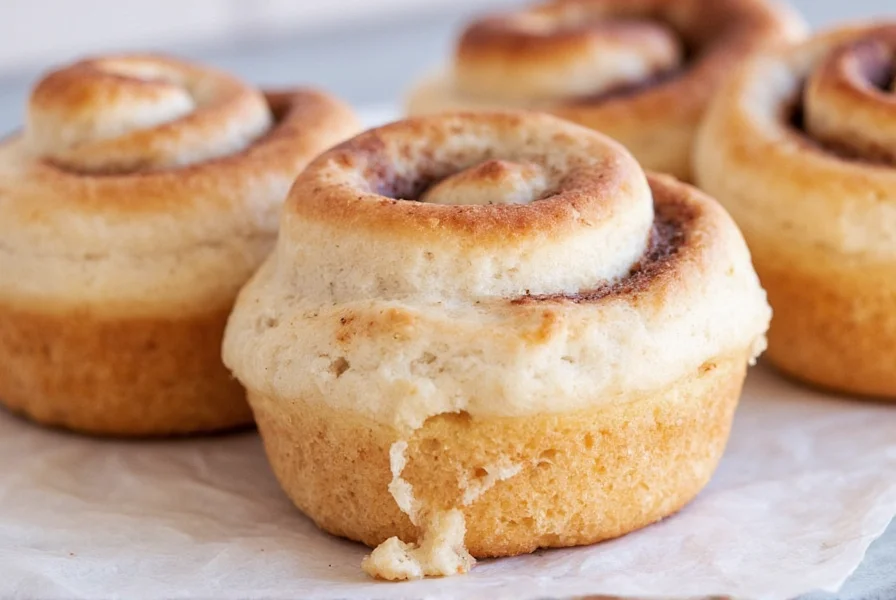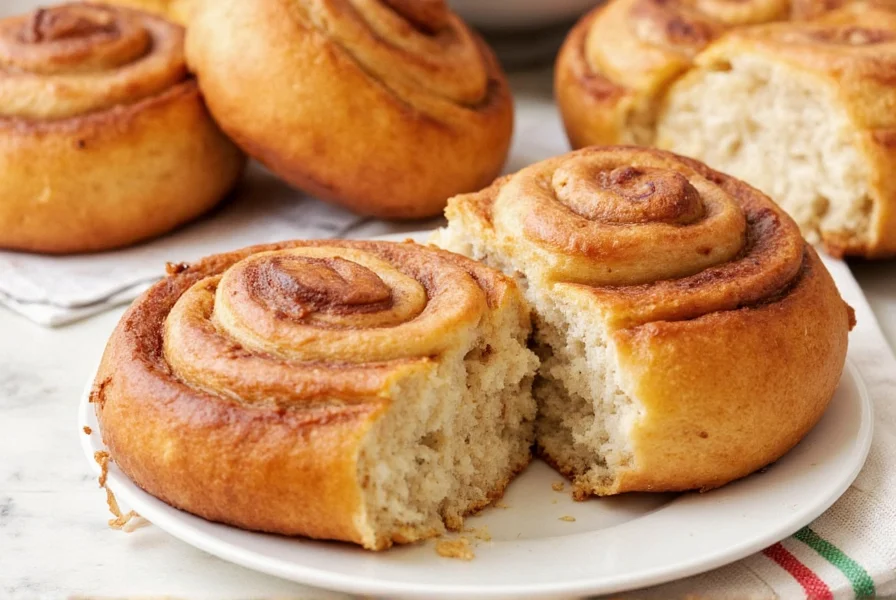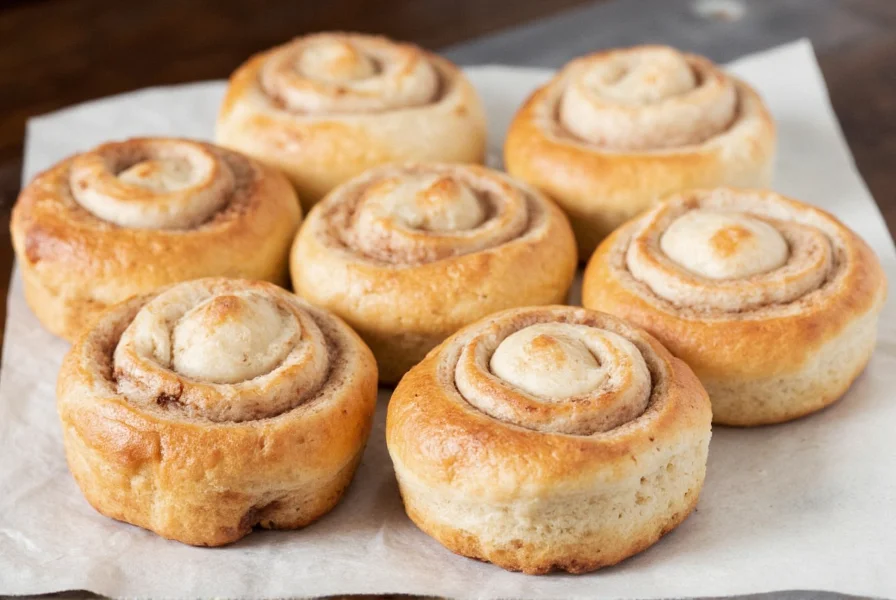Creating exceptional gluten free cinnamon buns requires understanding the unique properties of gluten free baking. Unlike wheat-based doughs, gluten free versions lack the elastic network that gives traditional buns their structure and chew. This fundamental difference means standard cinnamon roll recipes won't translate directly to gluten free baking without significant modifications.
Why Gluten Free Cinnamon Buns Fail (And How to Prevent It)
The most common pitfalls in gluten free cinnamon bun making include dense texture, crumbly structure, and lack of that signature pull-apart quality. These issues typically stem from improper hydration levels, incorrect flour selection, or inadequate resting time. Successful gluten free cinnamon buns require precise attention to:
- Flour blend composition (avoid single-grain flours)
- Liquid-to-dry ingredient ratio
- Proper resting time for starch hydration
- Baking temperature control
- Cooling techniques to prevent collapse
Essential Ingredients for Perfect Gluten Free Cinnamon Buns
The foundation of great gluten free cinnamon buns starts with selecting the right ingredients. Not all gluten free flours perform equally in yeast-based doughs. Our testing reveals that blends specifically formulated for bread baking yield superior results compared to all-purpose gluten free flours.
| Flour Blend Type | Best For | Texture Result | Recommended Brands |
|---|---|---|---|
| Bread-specific GF blend | Yeast doughs, cinnamon buns | Soft, slightly chewy | Cup4Cup, King Arthur Measure for Measure |
| All-purpose GF blend | Cookies, cakes | Dense, crumbly | Bob's Red Mill 1-to-1 |
| Rice flour only | Not recommended | Hard, gritty | Avoid for cinnamon buns |
For the best gluten free flour for cinnamon buns, choose a blend containing rice flour, potato starch, and tapioca flour in balanced proportions. The inclusion of xanthan gum is crucial for mimicking gluten's binding properties. If your blend doesn't contain xanthan gum, add 1 teaspoon per cup of flour.
Step-by-Step Gluten Free Cinnamon Bun Recipe
This tested recipe produces soft, pull-apart cinnamon buns with that perfect balance of sweetness and spice. Yields 12 generous buns.
Dough Ingredients
- 3 cups (360g) gluten free bread flour blend with xanthan gum
- 1/4 cup (50g) granulated sugar
- 2 1/4 teaspoons instant yeast
- 1 teaspoon xanthan gum (if not in flour blend)
- 1/2 teaspoon salt
- 1 cup (240ml) warm dairy-free milk alternative
- 1/4 cup (60ml) warm water
- 1/4 cup (57g) unsalted butter or dairy-free alternative, melted
- 1 large egg, room temperature
Filling Ingredients
- 1/2 cup (113g) softened butter or dairy-free alternative
- 1 cup (200g) packed brown sugar
- 3 tablespoons ground cinnamon
- 1/4 teaspoon salt
- 1/4 cup chopped pecans or walnuts (optional)
Icing Ingredients
- 4 oz cream cheese, softened
- 1/4 cup (57g) butter, softened
- 1 1/2 cups (180g) powdered sugar
- 1/4 teaspoon vanilla extract
- 1-2 tablespoons milk alternative
Instructions
- Mix dry ingredients: In a large bowl, whisk together gluten free flour, sugar, yeast, xanthan gum (if needed), and salt.
- Combine wet ingredients: In a separate bowl, mix warm milk, water, melted butter, and egg until well combined.
- Create dough: Pour wet ingredients into dry ingredients and mix until a soft dough forms. Gluten free dough will be stickier than wheat dough - this is normal. Do not add extra flour.
- Rest the dough: Cover bowl with plastic wrap and let rest at room temperature for 30 minutes. This allows the starches to fully hydrate.
- Roll out dough: On a surface lightly dusted with gluten free flour, roll dough into a 16x12 inch rectangle, about 1/4 inch thick.
- Add filling: Spread softened butter evenly over dough, then sprinkle with brown sugar, cinnamon, and salt mixture.
- Roll and cut: Starting from the long side, tightly roll dough into a log. Cut into 12 equal pieces using dental floss for clean cuts.
- Proof: Place buns in a greased 9x13 inch pan, cover, and let rise in a warm place for 45-60 minutes until nearly doubled.
- Bake: Preheat oven to 350°F (175°C). Bake for 25-30 minutes until golden brown and internal temperature reaches 190°F (88°C).
- Cool and ice: Let cool 10 minutes in pan, then prepare icing while buns cool completely.

Troubleshooting Common Gluten Free Cinnamon Bun Problems
Even with careful preparation, gluten free cinnamon buns can present challenges. Here's how to address the most frequent issues:
Dense or Gummy Texture
This typically occurs when the dough hasn't rested sufficiently or when too much flour is added during handling. How to make gluten free cinnamon buns moist without gumminess:
- Respect the 30-minute rest period - don't skip it
- Use a kitchen scale for precise measurements
- Avoid adding extra flour when rolling - use rice flour for dusting
- Ensure proper baking temperature with an oven thermometer
Crumbling When Cut
If your buns fall apart when cutting, the dough likely lacked sufficient binding agents:
- Verify your flour blend contains xanthan gum (or add it)
- Don't overbake - use a thermometer to check internal temperature
- Let buns cool slightly in the pan before removing
- Use dental floss instead of a knife for cleaner cuts
Lack of Rise
Yeast issues are common in gluten free baking:
- Test yeast in warm water with a pinch of sugar before using
- Maintain consistent warm environment for rising (75-80°F)
- Avoid placing dough near drafts or cold surfaces
- Use fresh yeast - it has a shorter shelf life than many realize

Variations for Dietary Needs
This base recipe adapts well to various dietary restrictions. For dairy free gluten free cinnamon buns, simply substitute all dairy ingredients with plant-based alternatives. Our testing shows that coconut oil-based butter substitutes work particularly well in the filling.
For those seeking a gluten free cinnamon roll recipe without xanthan gum, try adding 2 tablespoons of psyllium husk powder to the dry ingredients. This creates a similar binding effect though the texture will be slightly denser.
Storage and Reheating Tips
Gluten free baked goods often stale faster than wheat-based versions. To maintain freshness:
- Store cooled buns in an airtight container at room temperature for up to 2 days
- For longer storage, freeze unbaked rolls: place on a baking sheet, freeze solid, then transfer to freezer bags. Bake from frozen, adding 5-8 minutes to baking time
- Reheat individual buns by wrapping in damp paper towel and microwaving for 15-20 seconds
- Revive stale buns by placing in a 300°F oven for 5 minutes with a small bowl of water
Final Thoughts
Mastering gluten free cinnamon buns requires understanding the unique properties of gluten free flours and adjusting techniques accordingly. The extra attention to hydration, resting time, and gentle handling pays off with results that even gluten-eaters will enjoy. Remember that practice improves results - your second batch will likely surpass your first as you become familiar with how your specific flour blend behaves.











 浙公网安备
33010002000092号
浙公网安备
33010002000092号 浙B2-20120091-4
浙B2-20120091-4